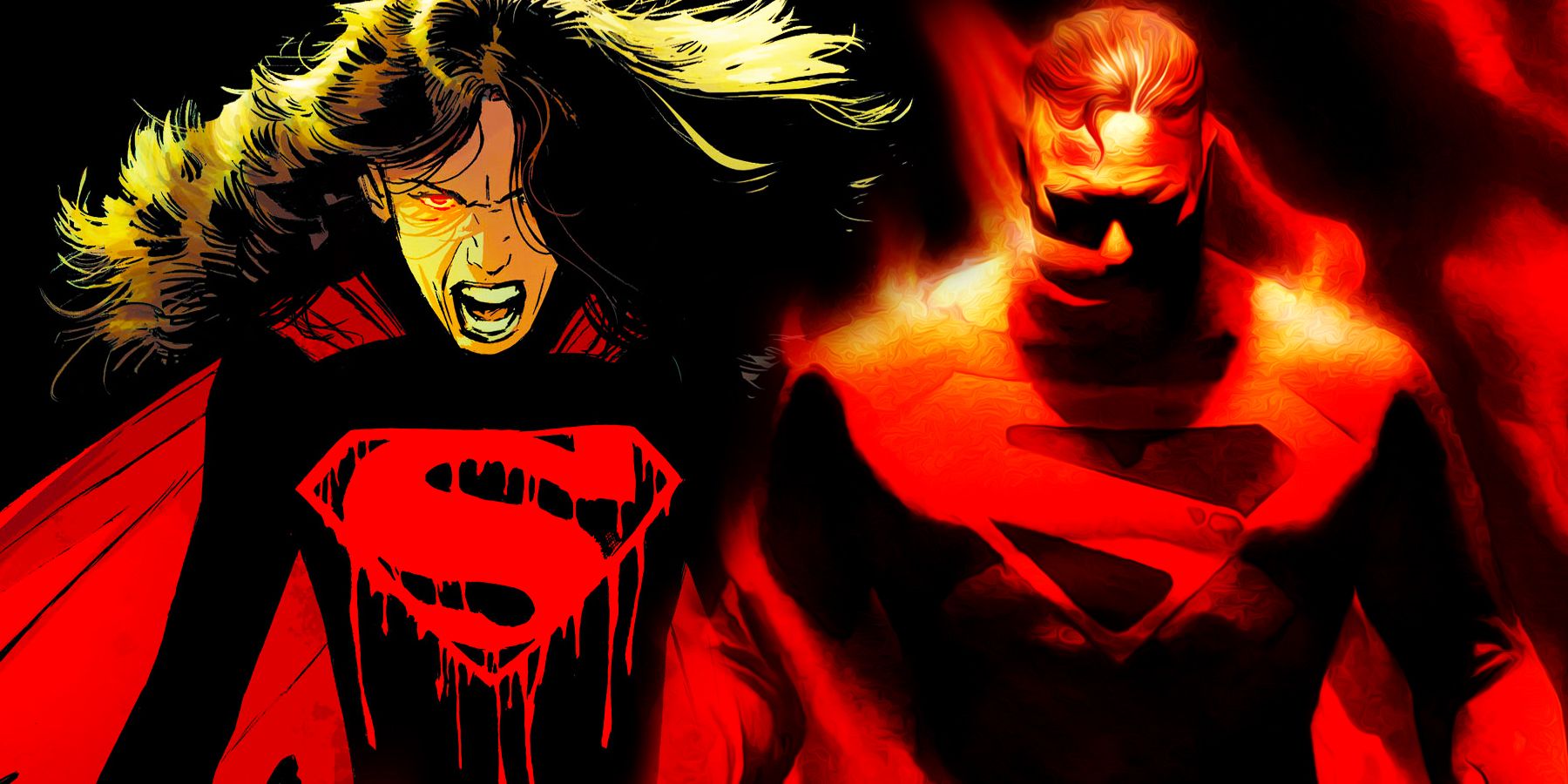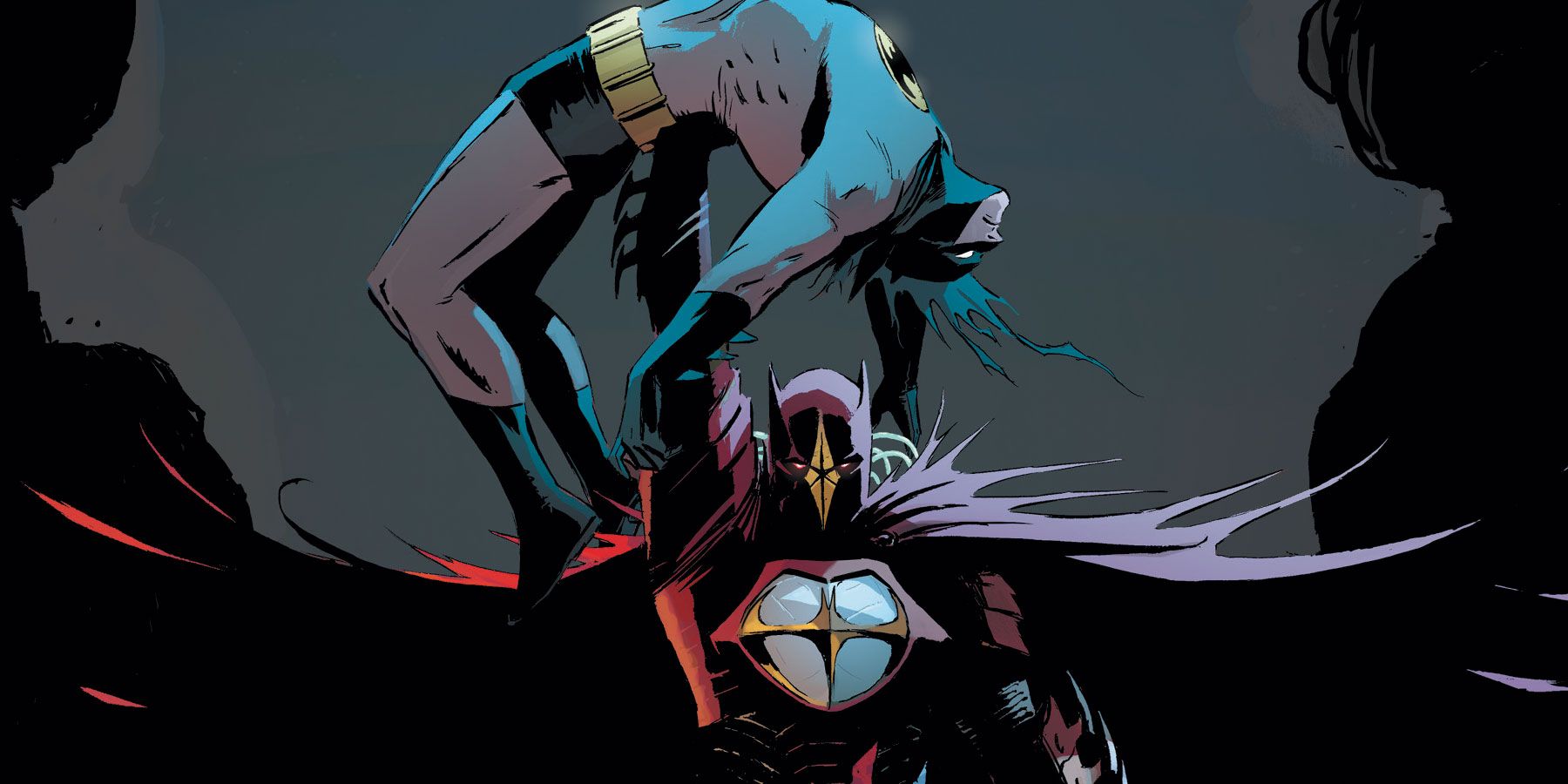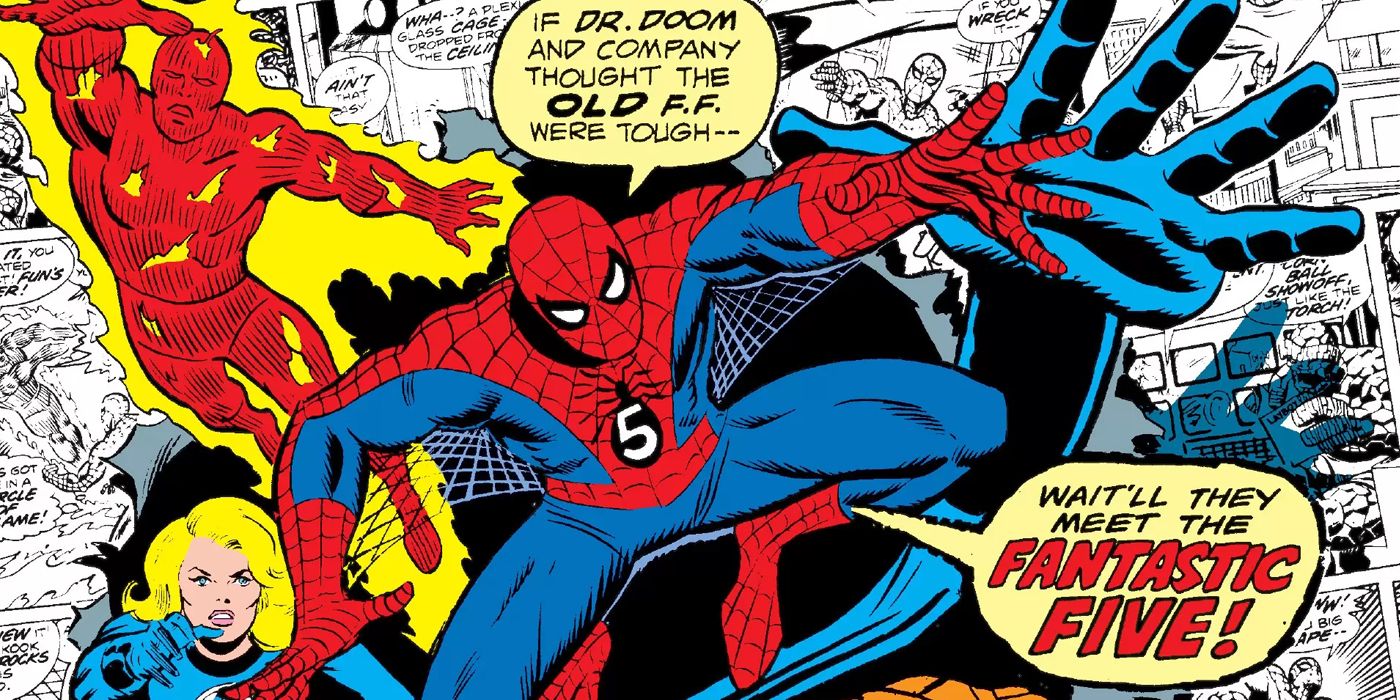DC's newly announced Tales from the Dark Multiverse promises to offer a new, darker look at its iconic characters and storylines. The upcoming specials will feature versions of these stories where things don't work out for the heroes, and they end up either corrupted or killed in the line of duty. But what's the difference between the new series and the classic DC alternate universe imprint, Elseworlds?
That latter imprint allowed creators to come up with new settings and incarnations for some of the most famous DC heroes and villains, instead of adapting specific stories or incarnations of heroes. In fact, the new specials have less in common with Elseworlds and are closer to Marvel Comics' What If? series than anything else.
The Dark Multiverse
The Dark Multiverse was first introduced during the DC: Metal storyline, and was revealed to be the opposite side of the established DC multiverse, created as a shadow of the multiverse when all things began. What makes this multiverse distinct is how it is fueled by dark worlds, where nightmarish tragedies befell the heroes in their otherwise iconic adventures. Each world is designated by a minus symbol (-), making them the true opposite to established worlds in the mainline DC multiverse.
During the events of DC: Metal, the dark god Barbatos tried to invade the main multiverse with an army of dark denizens of the DC Universe. This was led by the Dark Knights, a group of alternate Batmen who, through various means, controlled the abilities of various other members of the Justice League. Led by the Jokerized Batman who Laughs, the group almost managed to corrupt and destroy the mainline DC Universe and the positive multiverse as a whole. Luckily, however, the Justice League was able to beat back the Dark Knights and save the multiverse as we know it.
RELATED: DCeased #6 Cover Reveals Catwoman Leashed By Harley Quinn, Poison Ivy
Wonder Woman and Hawkgirl were even forced to contend with entire armies of dark incarnations of heroes and villains from the dark multiverse rushing to try and overwhelm them in the final issues of DC: Metal. Although the Dark Knights were defeated, the Dark Multiverse was heavily showcased during the story and wasn't stopped forever. Although the Dark Multiverse was eventually closed off, it still exists on the underside of the current multiverse, ready to be explored in future DC stories.
What If?
Elseworlds primarily take place in entirely self-contained continuities. Each reality introduced in every story was rarely revisited. Many of them featured conclusive endings, not leaving much room for the stories to evolve. While the Elseworlds line wasn't officially titled until 1991, it technically began with the steam-punk era Batman story, Gotham by Gaslight. The stories continued until 2004 when the imprint was slowed down to try and bring a feeling of uniqueness to the line if it ever came back. Although the Elseworlds imprint hasn't returned fully into the mainstream, stories like DCeased are closer to what Elseworlds was: introducing non-distinct incarnations of heroes to their own unique story arc and tone.
The biggest difference between Tales from the Dark Multiverse and Elseworlds is the subject matter of the stories. Elseworlds primarily introduced major changes in setting and tone. The most famous Elseworlds stories didn't adapt previously published work. Instead, titles like Gotham by Gaslight, Batman: Red Rain, and Superman: Red Son were about taking iconic characters and putting them into new styles of story. It wasn't any specific form of the hero, just more basic representations of the character in new settings.
Tales from the Dark Multiverse seems to be closer to What If? The Marvel series focused more on specific storylines and periods in character continuity. It focused on changes to the specific history of the Marvel Universe. Instead of creating new stories, Tales from the Dark multiverse will reportedly focus on two of the biggest 1990's DC crossovers, The Death of Superman and Batman: Knightfall. Both also seem to be taking the same direction What If? typically explored, showcasing a dark alternate narrative for the established stories where things played out differently than they did in canon.
It's been confirmed that future stories from the Tales from the Dark Multiverse will explore other established DC storylines like Teen Titans: The Judas Contract, Infinite Crisis and Blackest Night. The series will continue on in that manner, making it a chance to see DC exploring previous stories, allowing them to play out in new, exciting and almost assuredly tragic ways. Coming from the Dark Multiverse also promises that the stories will have a darker edge than most Elseworlds. What If? stories usually ended on downer notes, which seems to be a common thread for the Tales From The Dark Multiverse stories.
Tales from the Dark Multiverse: Batman: Knightfall will be available October 16. Tales from the Dark Multiverse: The Death of Superman #1 arrives in stores on October 30.



